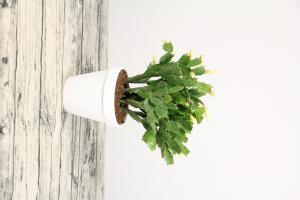How Do You Cut Back Tomato Plants?
Introduction
Tomatoes are one of the most popular vegetables for home gardeners. They are easy to grow, flavorful, and versatile in cooking. However, they can quickly become overgrown, which can lead to a decrease in fruit quality and yield. Knowing how to cut back tomato plants is an essential skill every gardener should have to maintain healthy plants and a bountiful harvest.
Why Cut Back Tomato Plants?
Tomatoes are highly prolific plants that can grow rapidly and become leggy. In most cases, pruning or cutting back is necessary to promote air circulation around the plant, prevent disease, and encourage the development of strong branches that can support heavy fruit loads. By removing some leaves, suckers, and stems, you can redirect the plant's energy to the remaining parts, resulting in healthier and more productive plants.
When to Cut Back Tomato Plants
The best time to prune tomato plants depends on the purpose and stage of growth. Some tomato varieties, such as determinate types, require minimal pruning as they tend to have a limited size and fruit production. Indeterminate tomatoes, on the other hand, can grow very tall and produce many branches, which may require regular pruning to avoid overcrowding and maintain a balanced plant shape.
Generally, you can start pruning tomatoes once they have formed a few sets of true leaves and are at least 6-8 inches tall. Avoid pruning during the early stages of growth, as this may slow down the plant's development and reduce its ability to absorb sunlight and nutrients.
How to Cut Back Tomato Plants
Cutting back tomato plants involves removing unwanted growth or parts of the plant to achieve specific goals, such as increasing yields, improving fruit quality, or controlling pests and diseases. Here are the steps to follow when pruning tomatoes:
1. Remove the lower leaves - Using a pair of clean and sharp pruning shears or scissors, remove the foliage that is touching the soil or close to it. These leaves can harbor pests and diseases and create a moist environment that favors fungal growth.
2. Pinch off the suckers - Suckers are the small shoots that emerge from the crotch between the stem and the main branch. They divert the plant's resources from the main stem and can delay fruit production. To remove them, gently snap or pinch them off using your fingers or a sharp tool. You can either leave the top two or three suckers intact or remove them to control the plant's growth.
3. Remove damaged or diseased parts - If your tomato plant has any diseased or damaged branches, leaves, or fruit, cut them off immediately and dispose of them. This will prevent the spread of diseases and pests and allow the plant to focus on healthy growth.
4. Trim the top branches - When the tomato plant reaches its desired height, you can pinch off the top branches to encourage lateral growth and improve yield. Alternatively, you can prune the tips of the branches by a few inches to create a more manageable size and promote bushy growth.
Conclusion
Cutting back tomato plants is an essential part of tomato gardening that can enhance the plant's health, productivity, and fruit quality. By knowing when and how to prune the plants, you can create a more balanced and manageable canopy, reduce disease pressure, and optimize yields. Remember to use clean and sharp tools, avoid over-pruning, and monitor the plant's progress to adjust your pruning regimen as needed.

 how many times do yo...
how many times do yo... how many planted tre...
how many planted tre... how many pine trees ...
how many pine trees ... how many pecan trees...
how many pecan trees... how many plants comp...
how many plants comp... how many plants can ...
how many plants can ... how many plants and ...
how many plants and ... how many pepper plan...
how many pepper plan...
































